Helleborus Orientalis, mixed media painting tutorial
June 5, 2012 2025-02-05 15:58Helleborus Orientalis, mixed media painting tutorial
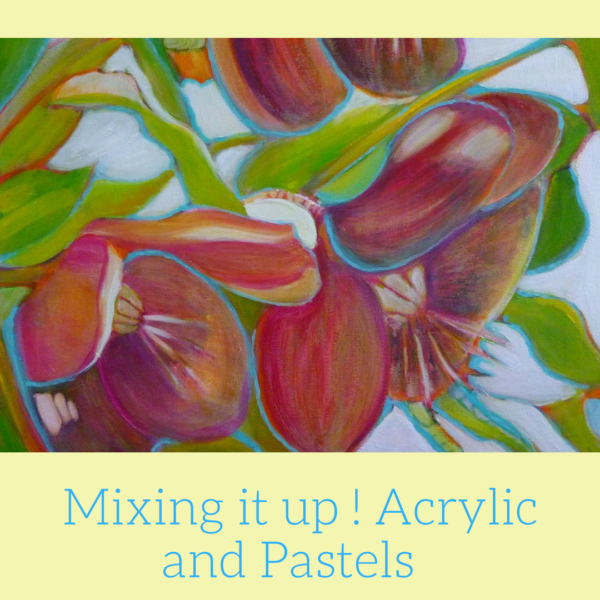
Helleborus Orientalis, mixed media painting tutorial
Recently I have been working on a expending my series of flower mixed media paintings, here is a small selection:
I like hellebores flowers, so graceful…I learned on Wikipedia that most species are toxic and have been used a medication. An overdose of medication containing hellebore has been suggested as a possible cause of the death of Alexander the Great.
Mixed media painting demonstration:
So here is a mixed media painting, acrylic and pastels on canvas, 24 x 24 inches, and here are the steps I took.
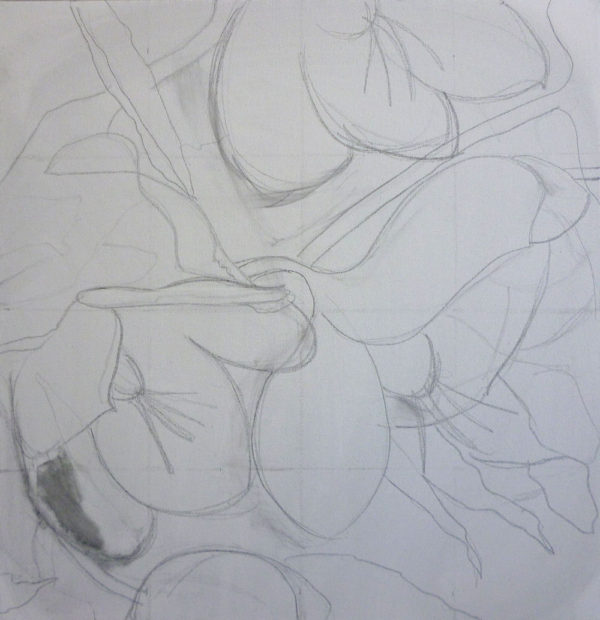
I start with a pencil drawing on my canvas, not too detailed as it is not going to be visible under several layers of acrylic anyway.
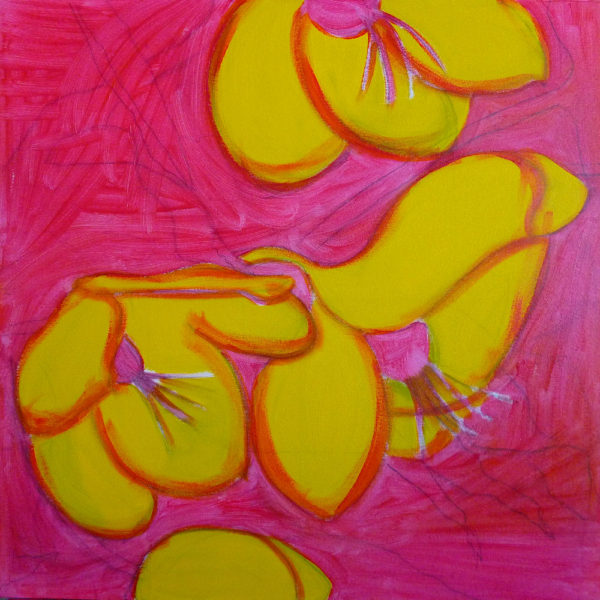
As I often do, I am starting with a layer of acrylic in opposite colors. The flowers are going to be purple so I used some yellow and the background will be mainly green so I used a bright pink.
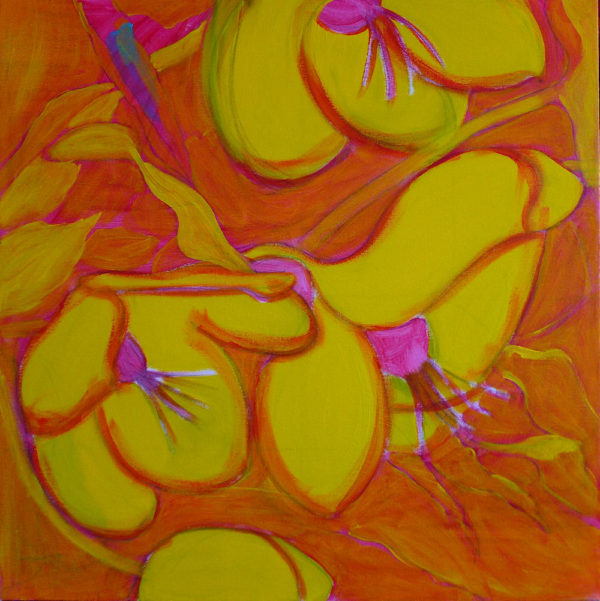
All those layers might be visible at the end only in some scrubbed areas and along the edges.
I am a Blick Art Materials affiliate and I receive a small compensation for sales. That does not effect in any way the cost of the purchaser’s order but it helps me keeping the content of this blog free.

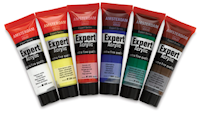 |
Amsterdam Expert Series Acrylic SetsThe well-balanced sets are chosen from Amsterdam’s full range of 70 genuine artists’ colors, formulated with high concentrations of authentic, non-fading pigments. These heavy body paints are exceptionally durable and flexible due to their 100% acrylic resin formulation. – Expert Series Set of 12 |
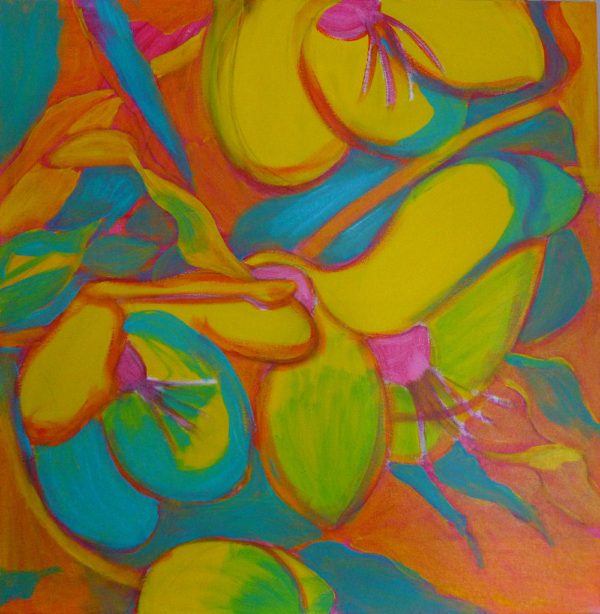
But working with layers helps me build rich colors and exciting edges. Here adding a cold blue with acrylic.
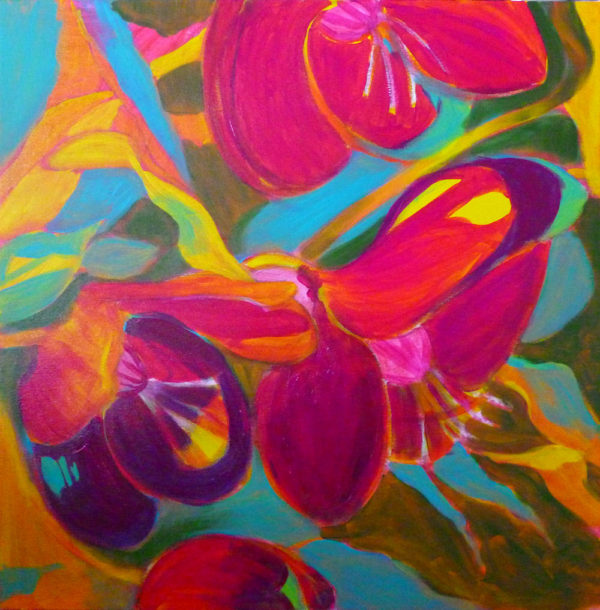
I now start adding the local colors, working with purple and pink on the flowers.
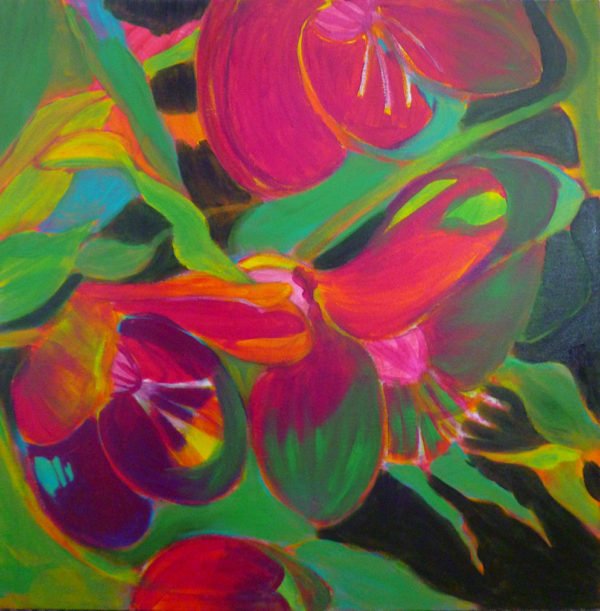
I apply a black background, that will show also only on some edges.
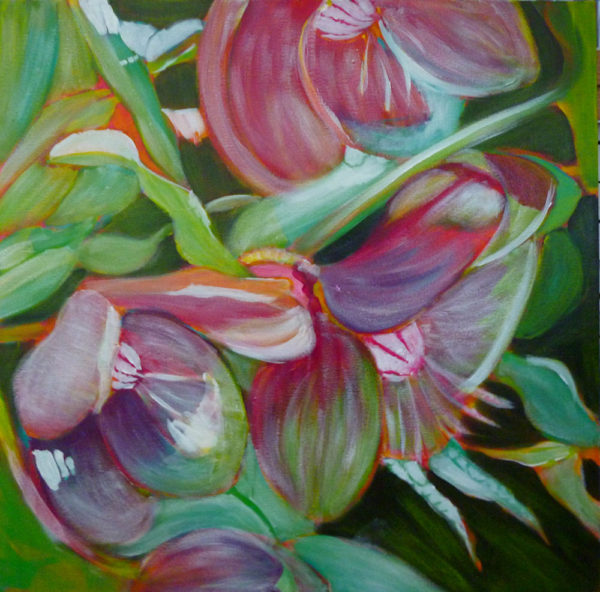
Adding more light with a glaze of white acrylic mixed with medium.
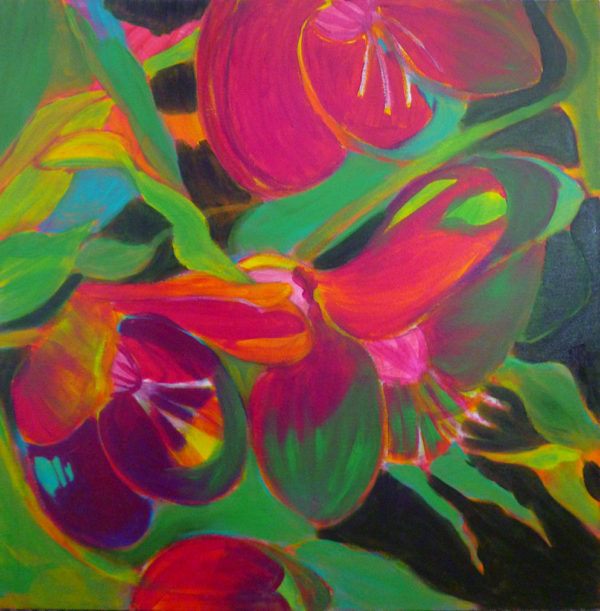
Still adding layers of acrylic, trying on different color compositions.
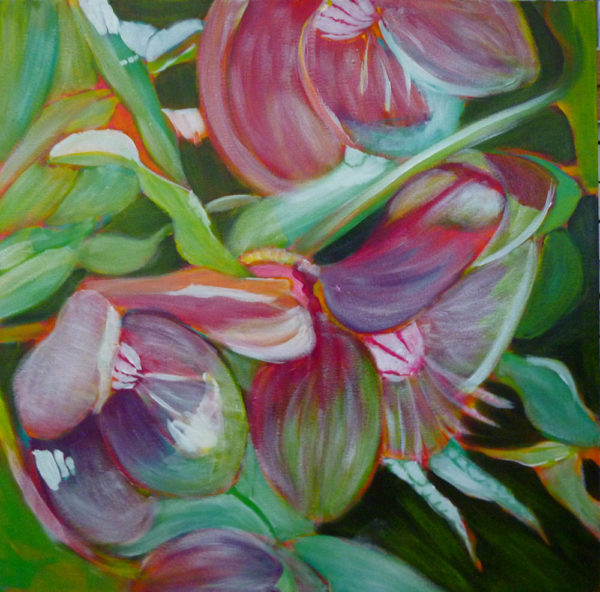
Adding another glaze of white acrylic.
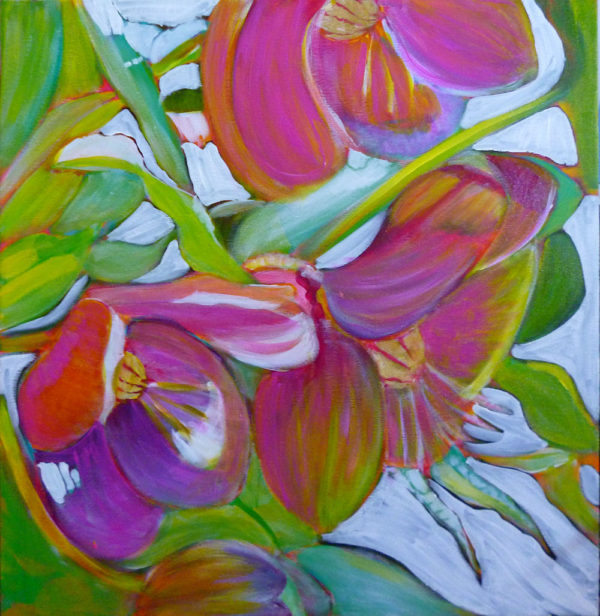
Adding glazes of yellow acrylic and painting a white layer on the background.
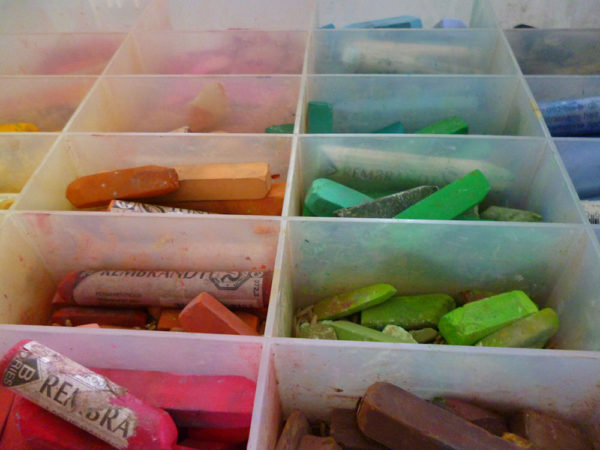
Now I want to try different possibilities with pastels. The advantage of using pastels at that point is that if you don’t like something you tried, you can just wash it away with a sponge.
I am a Blick Art Materials affiliate and I receive a small compensation for sales. That does not effect in any way the cost of the purchaser’s order but it helps me keeping the content of this blog free.

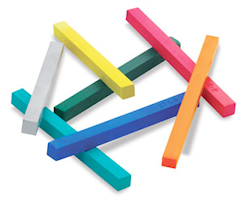 |
Prismacolor NuPastel Color SticksNuPastels have a rich, creamy texture that blends and shades easily. Frequently used in advertising layouts, NuPastels are stronger than ordinary soft pastels, which means less breakage and easier cleanup. Use them to create broad strokes and fine lines. |

I am working on edges, using pastels in different ways on the canvas: blending them with a stiff dry brush, mixing them with water and mixing them with medium.
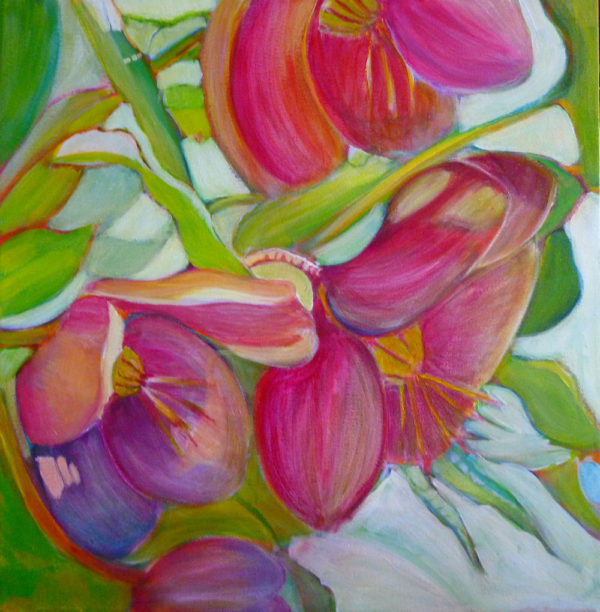
I like the colors now but I would like to show some of the underlying layers by scrubbing of some areas of the painting.
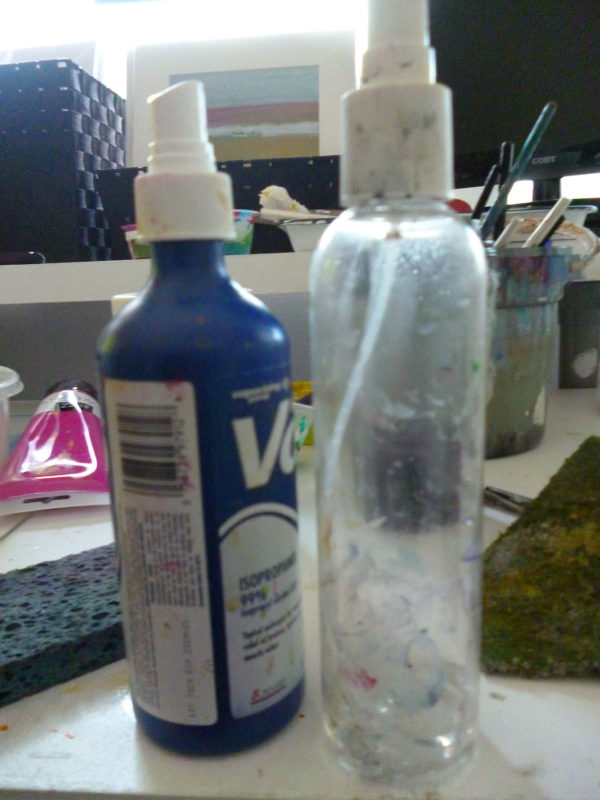
I am using a scrubbing sponge, alcohol to help remove some of the acrylic and lots of water.
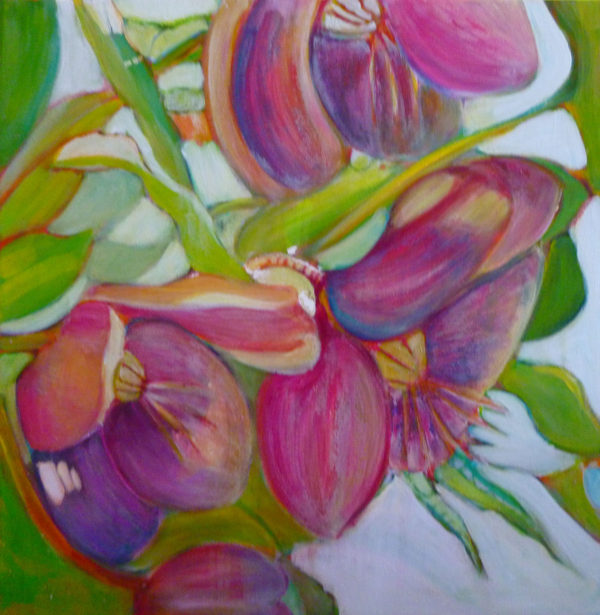
This process gives me interesting textures and complex colors, especially on the flowers.
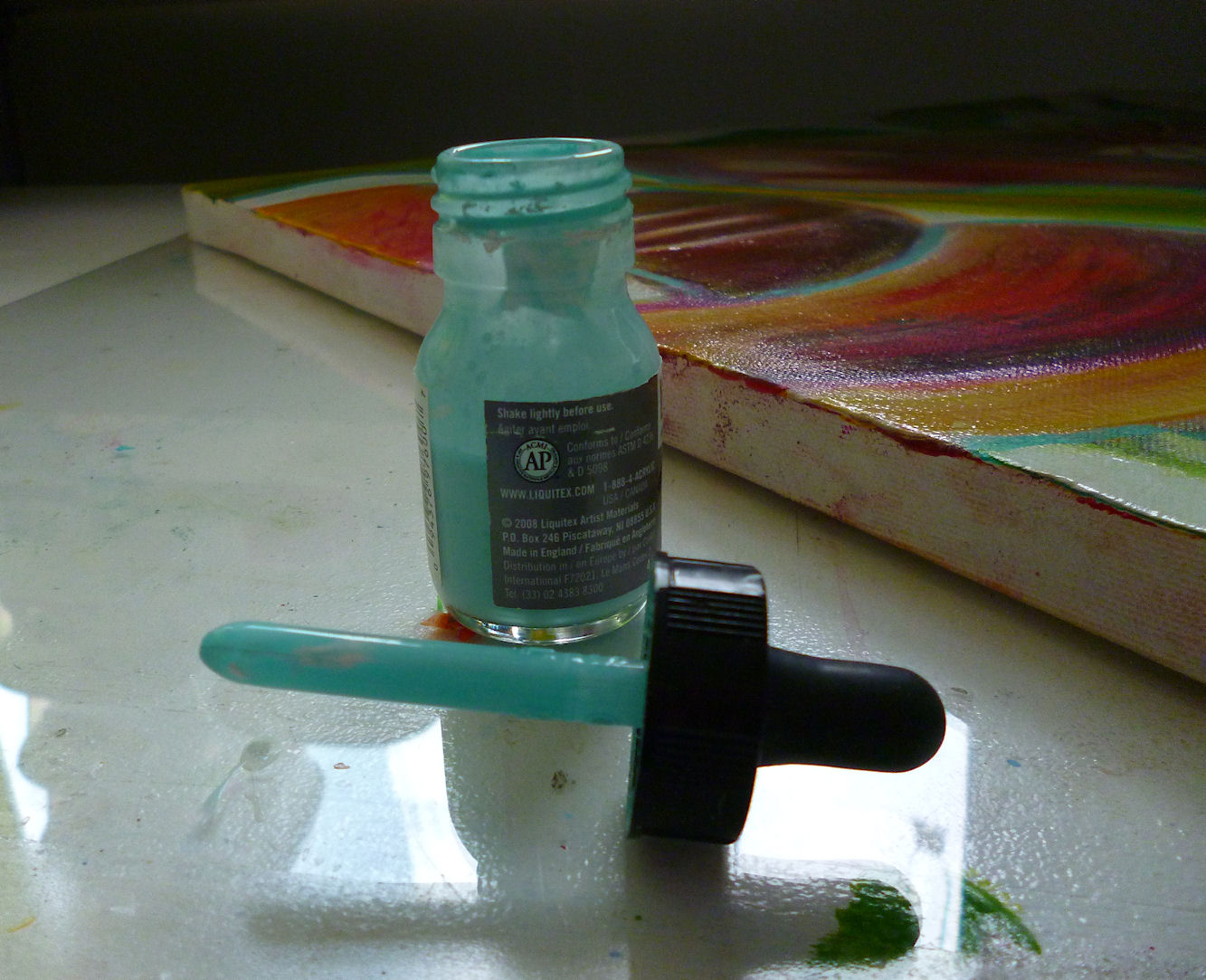
I want to add more of the light blue around the edges and want to work in a more watery way. I am using a drop dispenser with very watery acrylic and gouache
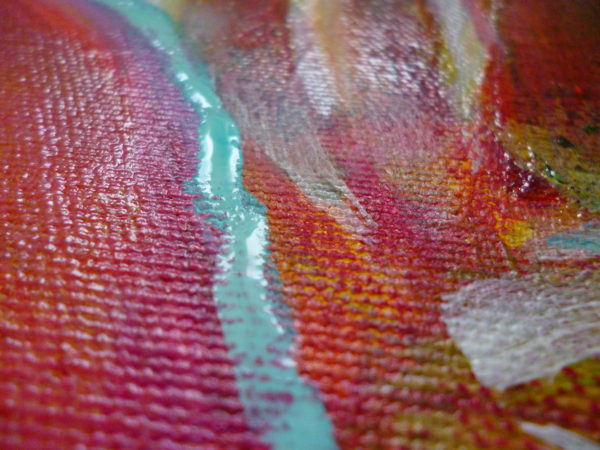
This gives an interesting effect.
Helleborus Orientalis, mixed media on canvas, 24 x 24 inches


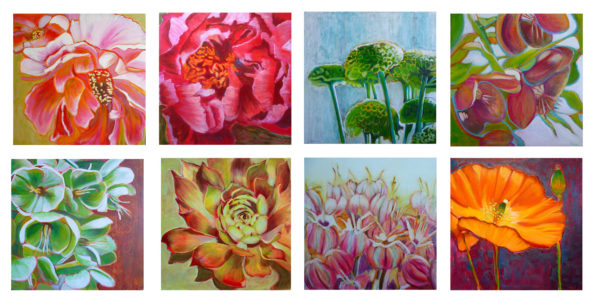
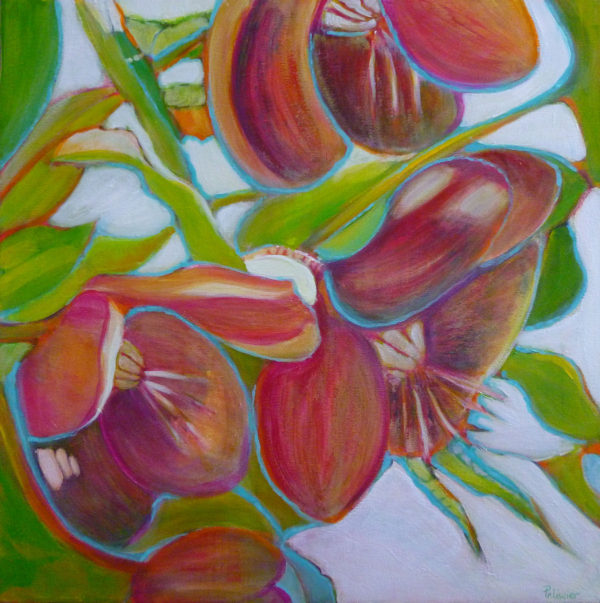
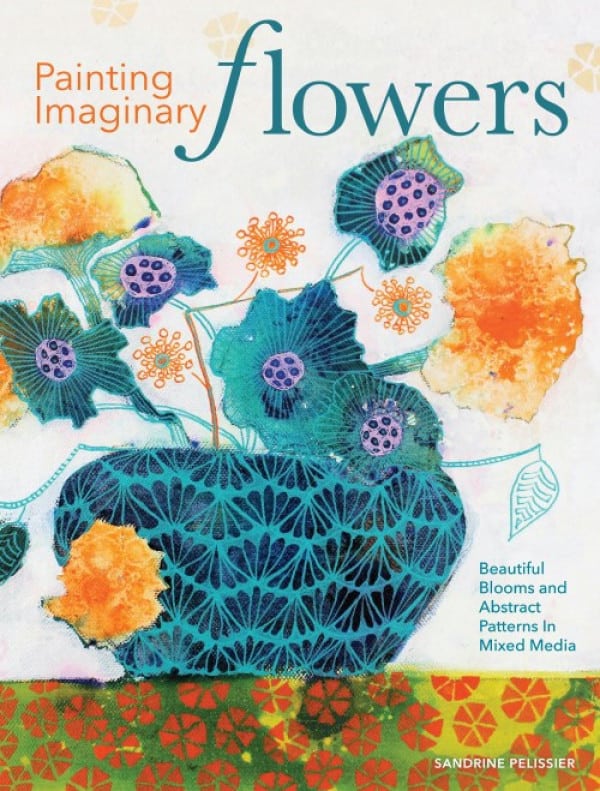
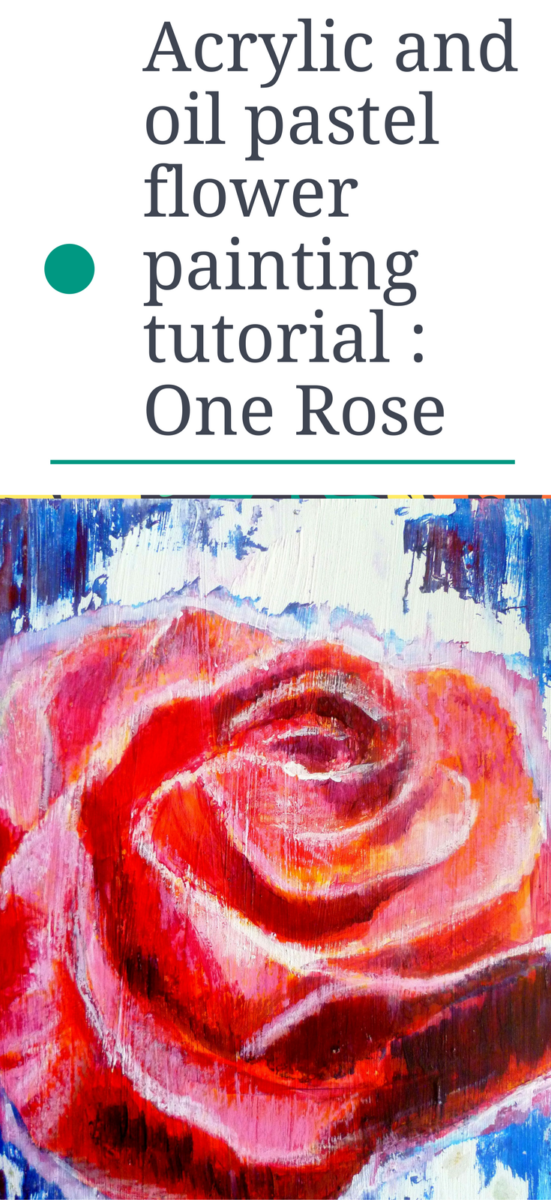

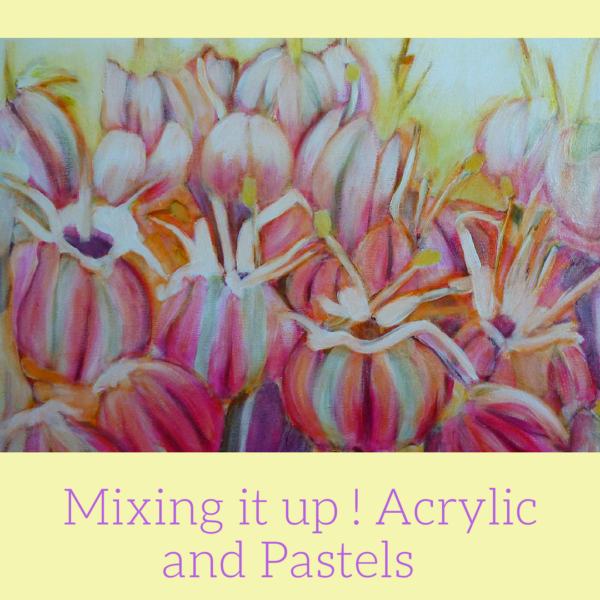
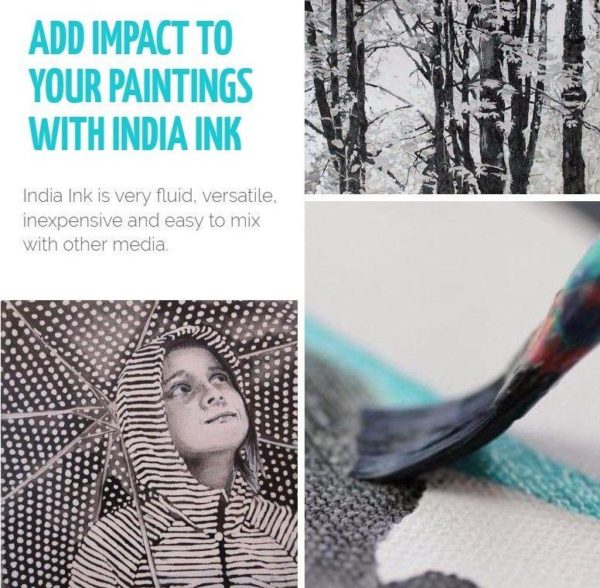




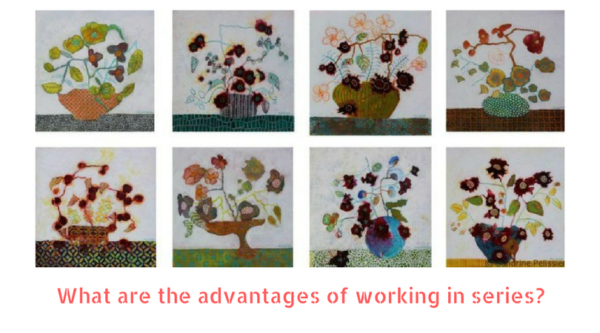


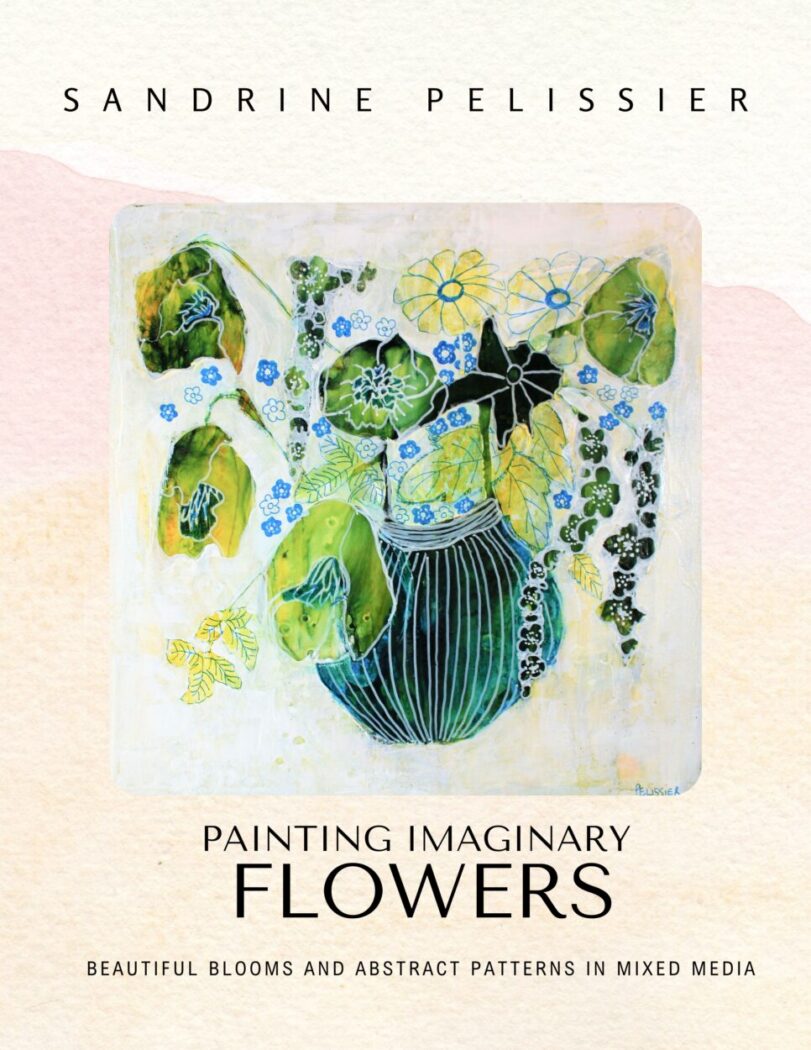
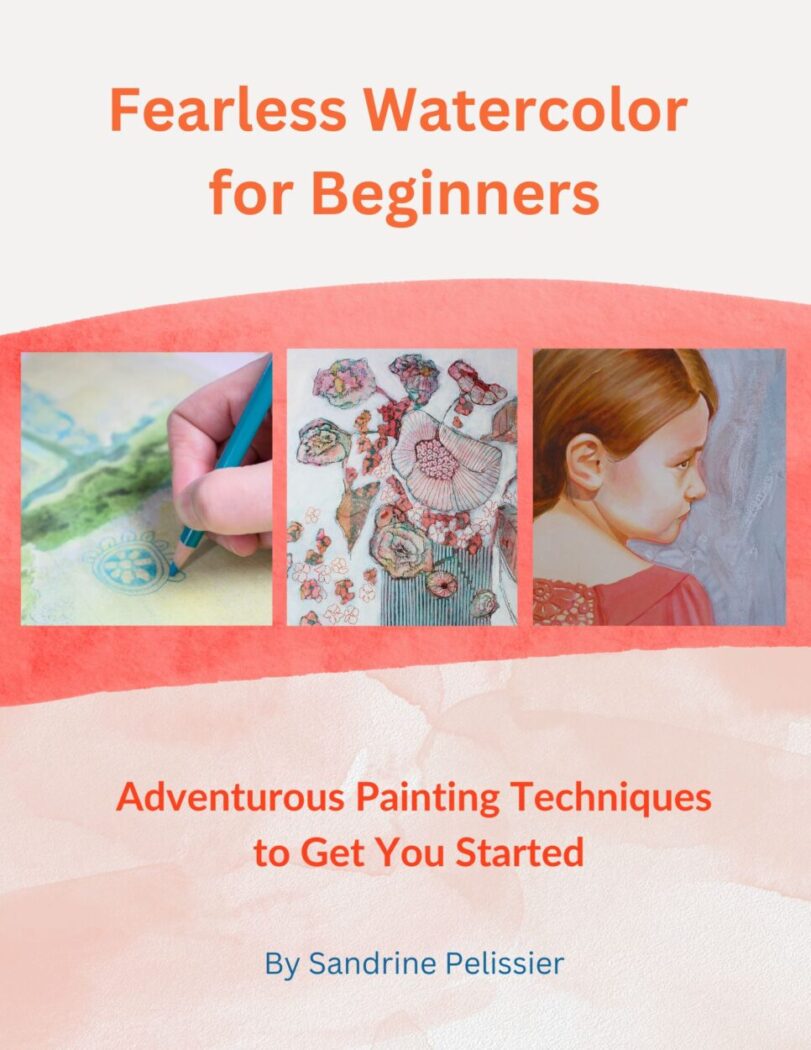

Comments (10)
Jeanine
I actually really like the look of the flowers at each stage after you covered the yellow. The white over the colors gave a nice interesting look to the painting. And then the more intense color – awesome. ..I’m truly amazed by your experimental process and want to integrate that into my own creative process. Now, another question for you. I read one of your entries where you discuss the initial stage of prepping, planning and experimenting with your idea before actually creating your artwork. Have you ever, and if so, how many times have you ended up totally messing up your creation? Like putting on too many layers and it ends up with areas of bunched up paint or muddy colors or anything that made you end up throwing it out or painting over it? Or does everything you do come out the way you planned or good enough to still be great even though it didn’t come out as planned? This happens to me too often. Sorry for the long winded/confusing comments/questions.. I’m just very interested in the way you work.
Sandrine Pelissier
Hello Jeanine,
That is an interesting question, thanks for asking it. I noticed that all my paintings go through what I call a ugly phase at one point or another. A phase where I think the painting is lost. Most of the time the painting can recover from this phase.
I have done some paintings that I thought were not up to my own standards and they ended up in the recycling bin for a new painting or in the garbage. I don’t think any artist has a 100% success rate and that is part of the process.
I wrote a post about the complex feelings I get when painting, you can read it here: https://paintingdemos.com/a-complicated-relationship/
Saeeda
Beautiful demo
Pouring fluid acrylics and negative painting: A green flower bouquet
[…] Hellebores, a mixed media step by step painting demonstration […]
David Mahlow
Wow! Cool process.
Sandrine Pelissier
Thanks David !
lyonandcompany
Soooo wish I could draw like this! Your art is lovely!
Sandrine Pelissier
Thanks lyonandcompany, I am glad you liked it 🙂
Yevgenia Watts
Very cool. I enjoy seeing your process. Do you add any mediums to your acrylics? Also, do you always work flat (meaning, just the texture of the canvas/board, no extra texturizing stuff)?
Sandrine Pelissier
Thanks Yevgenia,
I sometimes add acrylic medium to my paint depending on the degree of covering/transparency I wish to achieve. It also depends on the brand of acrylic paint, some are way more concentrated than other brands. I am not using too many products for textures, I achieve it mostly by a process of layering and scrubbing. I used to experiment with texturing paste but nowadays like better working more flat.